When it comes to homegrown vegetables, squash is one of the oldest domesticated crops ever grown. With some varieties able to be stored for months at a time, the squash has often been instrumental in human survival during periods when other food types were scarce. Below you’ll find an overview of types of squash varieties and how to tell them apart.
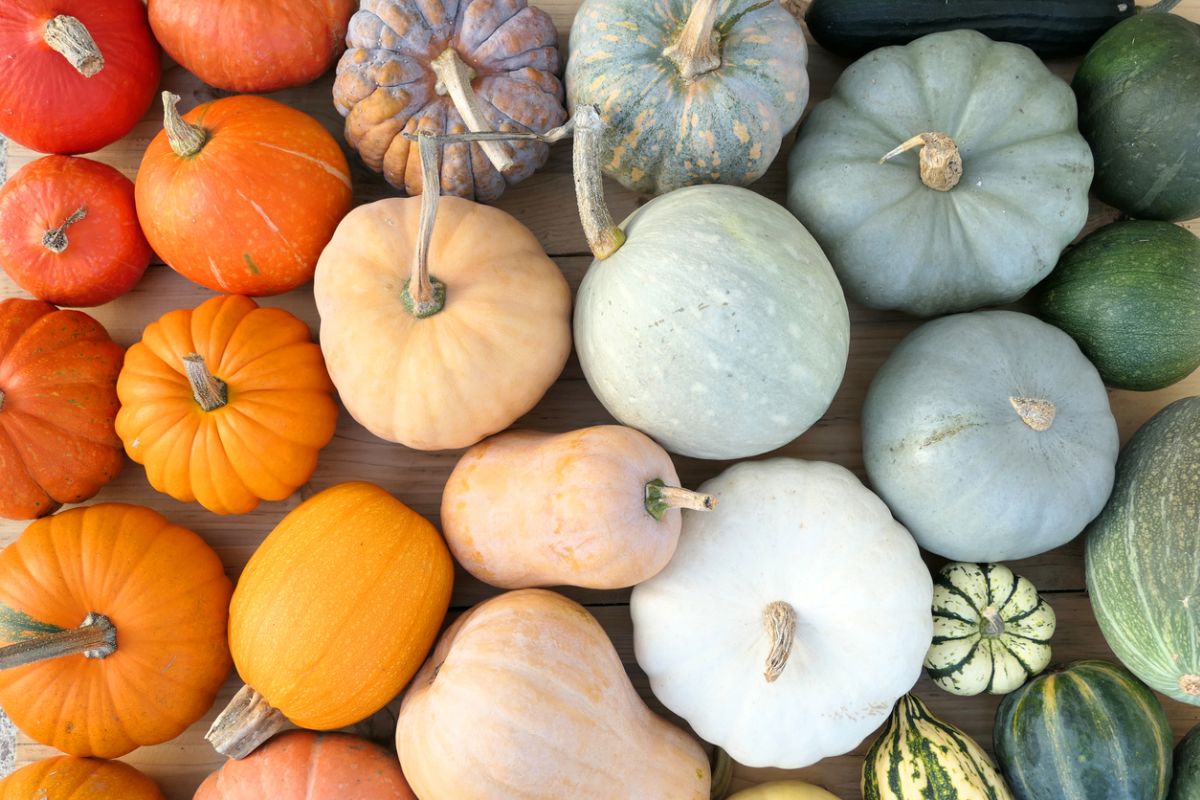
From patty pan squash to sugar pumpkins, you’re sure to find a variety of squash that you’ll love and a favorite method of preparing it.
What Type of Food Is Squash?
Squash is an herbaceous vegetable that reproduces with gourds. Five major species of squash are domesticated edible squash that are cultivated around the world. Many other species are inedible and their gourds are used for crafting. Squash is grown in summer squash varieties and winter squash varieties.
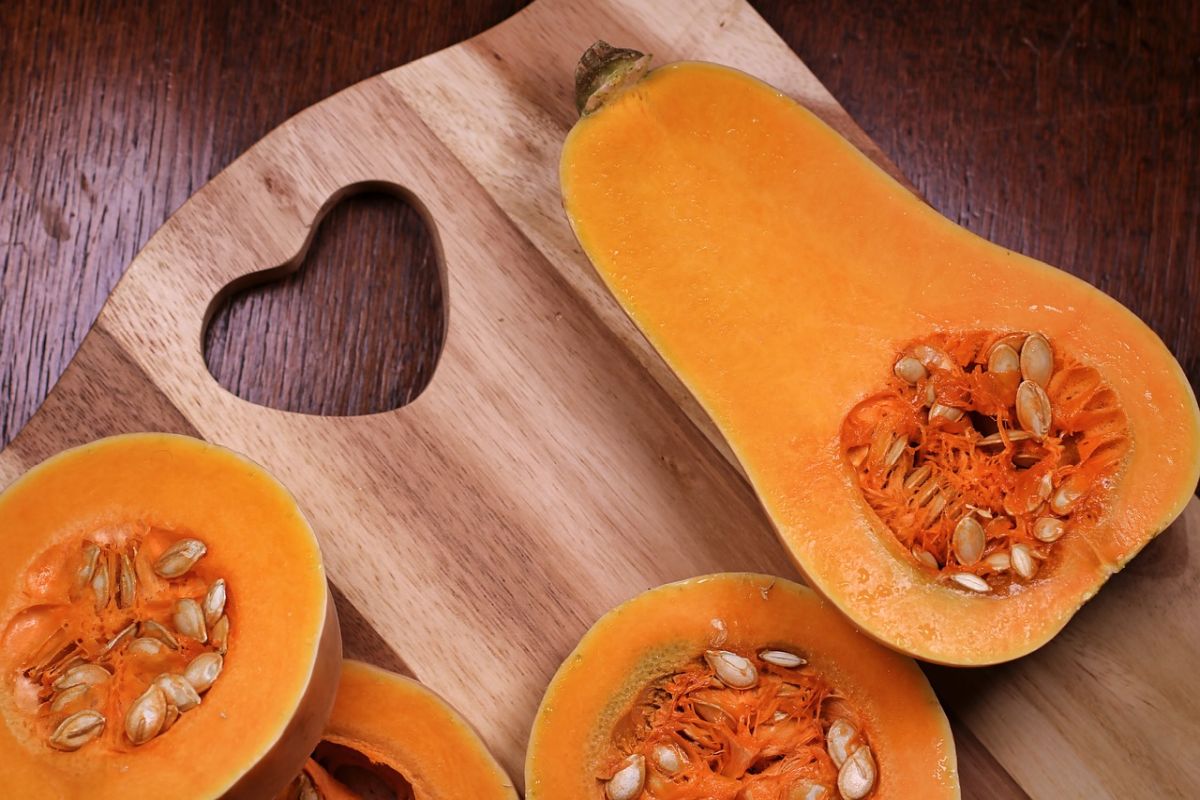
How to Identify Different Types of Squash
There are so many different cultivars of edible and inedible species. As a result, learning how to identify different squash varieties can be tricky.
Here are just a few of the identifying traits you can assess if you’re trying to figure out what kind of squash you’re handling:
- Outer color: The outer skin color of a squash is often one of the first indicators you’ll see that can help you determine which variety you’re looking at. Squash can vary greatly in their skin colors and patterns. These distinctions make it easy to tell the difference between a pure green zucchini and a colorful carnival squash.
- Flesh color: Other than the color of the outside of the squash, another thing you should look at is the color of the flesh inside. Some types of squash are known for having bright orange or orange-yellow flesh. On the other hand, others may have a pale green or white flesh instead. It all depends on the variety you’re working with.
- Skin density: Skin density is one of the easiest indicators for determining whether a squash is a member of a summer squash variety or a winter squash variety. Summer squash varieties have a thin, edible skin. In contrast, winter squash varieties have a thick outer shell that helps them keep in long storage.
- Weight: The weight of a squash can be a way to tell whether the squash is an edible or inedible type. Edible squash varieties are heavy because of the flesh they contain, while bottle gourds and other inedible squash will feel light and hollow.
- Flavor: When it comes to flavor, summer squash and winter squash taste radically different. Since summer squash are cooked when the fruit is still immature, they have a bland, slightly sweet flavor. Winter squash are cooked when mature after storing sugar throughout the growing season, making them a much sweeter and nuttier tasting option.
If you’ve checked out these different traits and still can’t identify which type of squash you’re looking at, you have a few other options for figuring it out.
Option One
Check out an online seed catalog from an heirloom vegetable seed company such as Baker Creek. These companies have listings for dozens of the most popular squash varieties. You can use the photographs to identify which squash you have on hand.
Option Two
Take the squash down to your local farmer’s co-op or extension. These offices are agricultural stations that provide information on regional produce and horticulture. If your squash was raised locally the farmer’s co-op can be a useful way to identify local cultivars.
How to Cook Various Types of Squash
Squash is popular in the culinary world because of its smooth mouthfeel and its sweet, nutty flesh. The variety of squash you have will often determine the cooking methods used in preparing it as food.
Here are some of the major cooking methods you’ll run into for preparing summer and winter squash:
Stir-frying
Stir-frying or frying in a stovetop skillet is a popular cooking method for thin-skinned varieties of summer squash, such as green zucchini and crookneck squash. Because their skins are thin and edible, summer squash can be cooked right after washing and slicing.
These squash varieties are popular as a savory side dish. They are often cooked with other vegetables like mushrooms, onions, and garlic.
Baking/roasting
Oven-cooked squash is a popular preparation for summer and winter squash varieties, but it’s especially popular with tougher squashes like pumpkin, acorn squash, and butternut squash.
Baked squash can be prepared as either a savory side or a sweet side, as many home chefs accentuate its naturally sweet flavors with additions such as maple syrup or brown sugar.
Raw preparation
Green zucchini is a popular squash choice for raw preparation since it is soft and relatively bland. By slicing zucchini with a sharp kitchen tool like a mandoline, zucchini can be used as a raw noodle substitute in salads or vegan dishes. These squash noodles can also be boiled to replace pasta in cooked dishes.
Soups
Both summer squash and winter squash are used in vegetable soups, but the most popular squash varieties for soup include butternut squash, sweet dumpling squash, hubbard squash, and kabocha squash.
Summer squash is usually incorporated in cold summer soups like gazpacho, while winter squash soups are typically served warm.
Stuffing
Stuffing is a useful cooking preparation for both winter squash and summer squash varieties. Fillings for stuffed squash can range from vegetarian mixtures like rice, bread stuffing, and herbs to ground beef or other meats.
In many cases, the cooked interior of the squash will be chopped up and mixed back into the stuffing to add extra moisture and flavor.
Deep frying
A smart way to get even picky eaters to try summer squash is to batter and fry squash slices in seasoned flour or tempura. While this cooking method makes squash slightly less healthy, it does make it more appealing to people who don’t like the bland texture of it when it is eaten raw or steamed.
Grilling
Grilled zucchini and yellow squash provide a nutritious pairing for other grilled main dishes at an outdoor barbeque. Chopped squash can be either seasoned and cooked on meat skewers or placed in aluminum foil packets with spices, onions, and other vegetables for a smoky and delicious side.
No matter which squash type you use, the base flavor of squash is relatively bland. This is especially the case with summer squash varieties. This makes spicing the squash properly and adding flavorful secondary ingredients an important part of cooking squash in a delicious way.
Squash Types That Are Inedible
Even though there are many cultivars of squash that are delicious to eat, there are also many varieties that are inedible. Rather than being called squash, these inedible squash varieties are more often known as decorative pumpkins or gourds
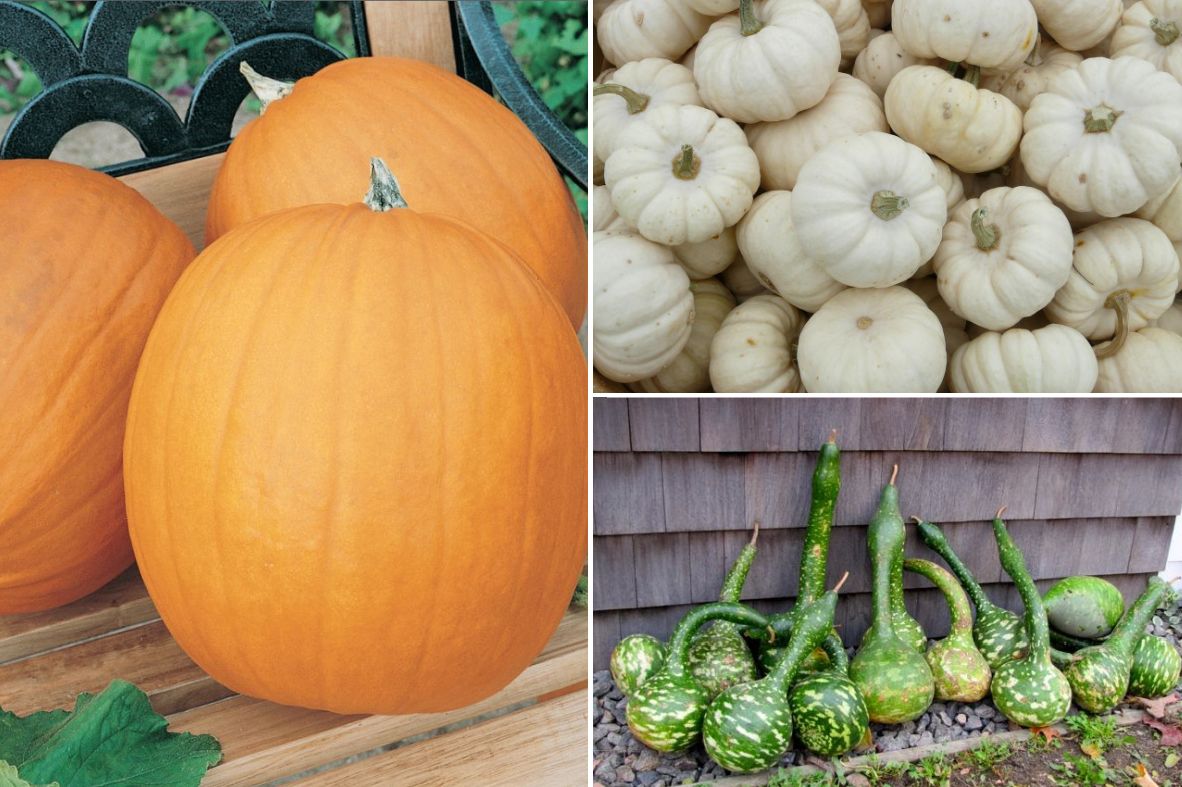
Here are a few of the squash you may run across in a grocery store that aren’t edible:
- Miniature pumpkins: A common sight in grocery stores around Halloween, miniature pumpkins are much tougher than their larger cousins and are only suitable for using in table arrangements and other decorations.
- Apple and gooseneck gourds: Apple and gooseneck gourds are dried gourd types that are used for decoration or arts and crafts. Gooseneck gourds can be recognized by their long sloping upper half, while apple gourds look like a gooseneck gourd except without the neck. Both gourds are usually pale amber in color.
- Pumpkins used for jack-o-lanterns: Even though some pumpkin varieties such as sugar pumpkins are grown for cooking, many larger varieties seen in grocery stores in autumn are bred for carving instead. While technically edible, these Halloween pumpkins often have poor cooking quality compared to culinary pumpkins.
If you’re still not sure which pumpkins are edible and which ones aren’t, don’t worry. We’ll be going over the different types of squash in the list below.
Different Types of Squash
Trying to get good at cooking and preparing squash? The fastest way to learn to make squash well is to lean into the best cooking qualities and preparations of each squash type. Below you’ll find a list of the major squash varieties you’re likely to run across and the best ways to prepare them.
Types of Summer Squash
Summer squashes are a prolific type of squash that is a common staple in backyard gardens. Summer squash are harvested while the fruit is still immature to make sure that the skin is thin enough and the flesh is tender enough for the squash to be edible.
1. Crookneck Squash
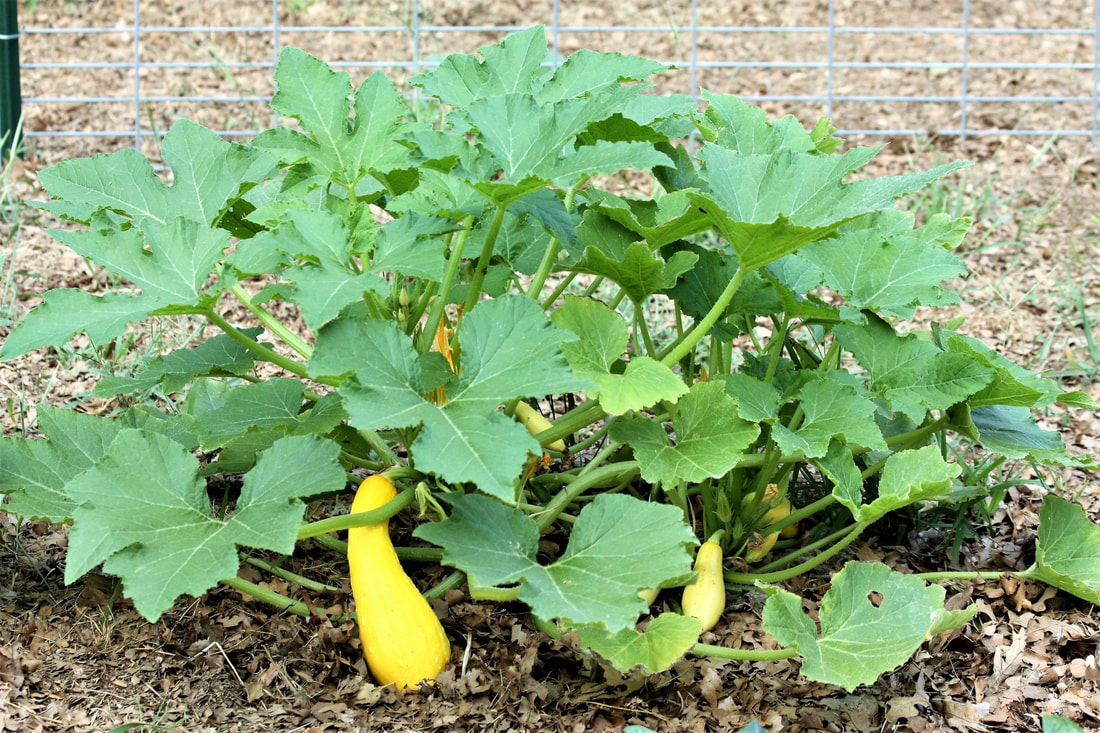
Crookneck squash is also known as yellow squash and is one of the most popular types of squash that are grown in backyard gardens due to their easy cultivation and their prolific harvest.
These squash are a bush habit squash that doesn’t spread over the grow on vines like winter squash varieties. (Yellow Crookneck Squash – The Daily Garden)
2. Green Zucchini
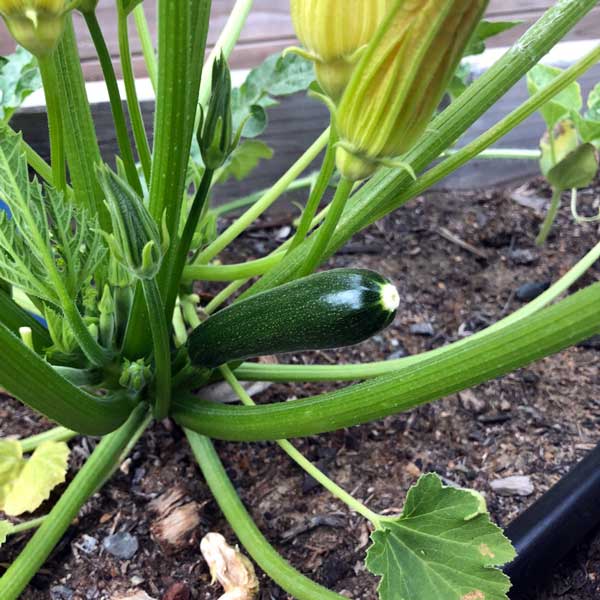
If crookneck squash is one of the most popular types of squash grown by gardeners, green zucchini is neck and neck with it. A hardy plant that puts out dozens of fruit over the course of a summer season, green zucchini is popular sliced in stir fries and grated into baked goods for a punch of extra nutrition. (How to Plant & Grow Zucchini – Brown Thumb Mama)
3. Patty Pan Squash
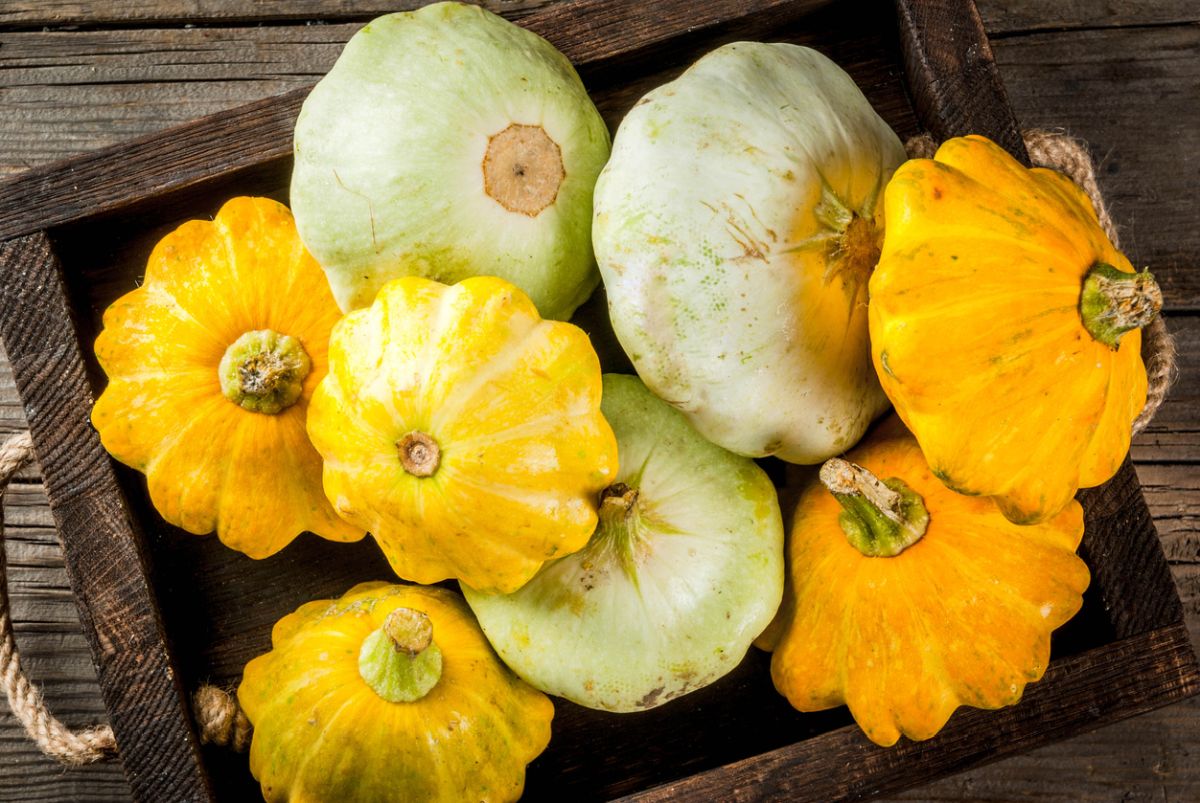
Patty pan squash are a small variety of summer squash that are known for their bright yellow skin and their bell-like, flower-shaped fruit. Larger patty pan squash can be cored out and filled with rice or ground meat fillings, while smaller patty pan squash can be cooked either whole or chopped as a vegetable side dish. (Braised Pattypan (Sunburst) Summer Squash | Frugal Nutrition)
4. Yellow Straightneck Squash
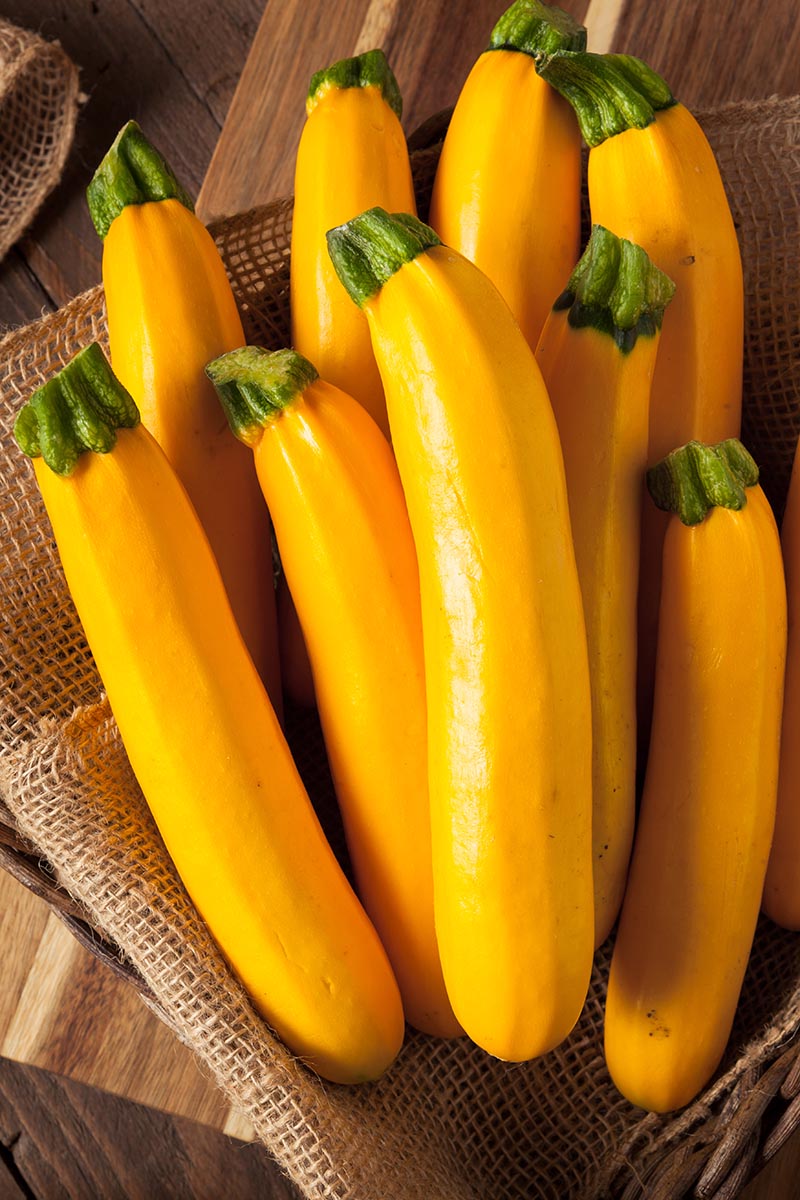
Yellow straightneck squash is similar to yellow crookneck squash in flavor and texture. But its shape is straight and uniform like a zucchini. This squash is also known as yellow summer squash.
The younger summer squash are when they’re harvested from the garden, the more tender and delicious their flesh is after cooking. These squash are also a popular variety to slice paper-thin for use in layered salads. (How to Grow Golden Zucchini | Gardener’s Path (gardenerspath.com))
5. Cousa Squash
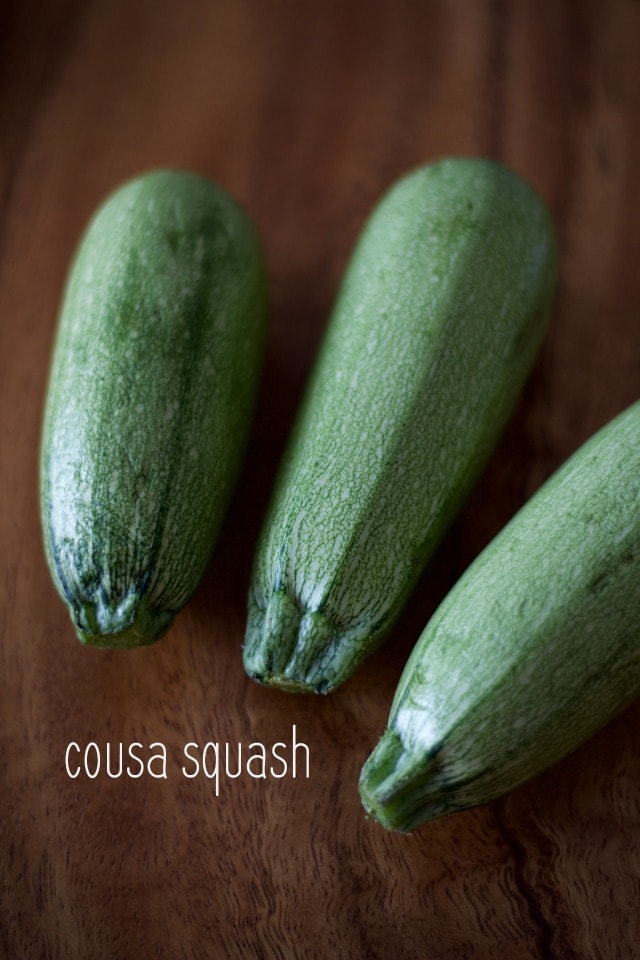
Cousa squash is a pale, slightly bumpy summer squash. It has a similar shape to zucchini squash, though somewhat stubbier and wider. This type of squash is commonly found in Middle Eastern cuisine and is a good squash to use for stuffing.
The lightly sweet flavor of cousa squash pairs well with stronger flavors such as tomato sauce and spiced meats. (baked summer squash – stuffed to perfection! – The Culinary Chase)
6. Zephyr Squash
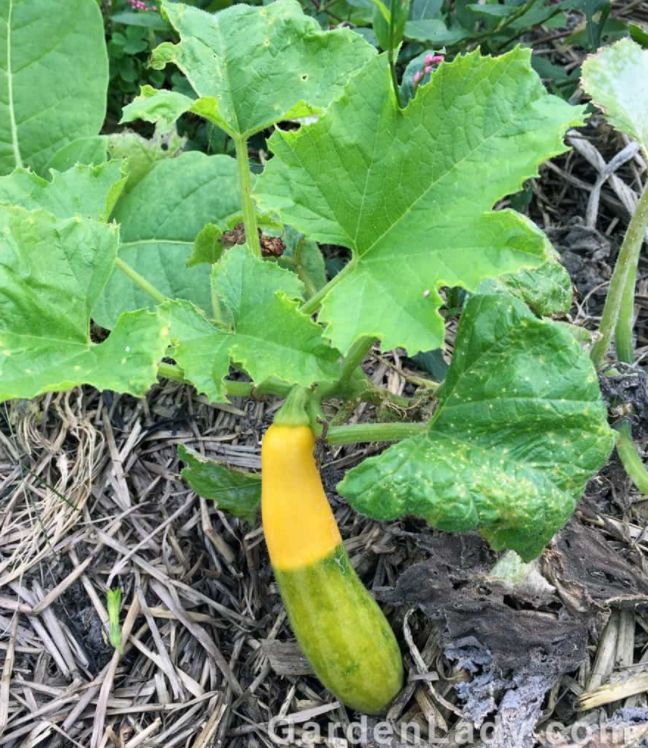
The zephyr squash are possibly the most interesting looking squash out of all the summer squash varieties. With a green bottom half and a yellow upper half with a perfect dividing line between them, these two-toned squash will be a conversation starter in any home garden.
Zephyr squash are similar to zucchini squash in flavor. They are versatile enough to be used in any summer squash recipe. (I Love Zephyr Summer Squash – GardenLady.com)
Types of Winter Squash
Unlike summer squash, which are harvested when immature, winter squash are cultivated to be harvested when fully ripened. The hard outer skin that covers most of these winter squash types makes them useful for putting into long-term storage for eating throughout the autumn and winter.
Winter varieties of squash tend to be sweeter in flavor than summer varieties.
7. Acorn Squash
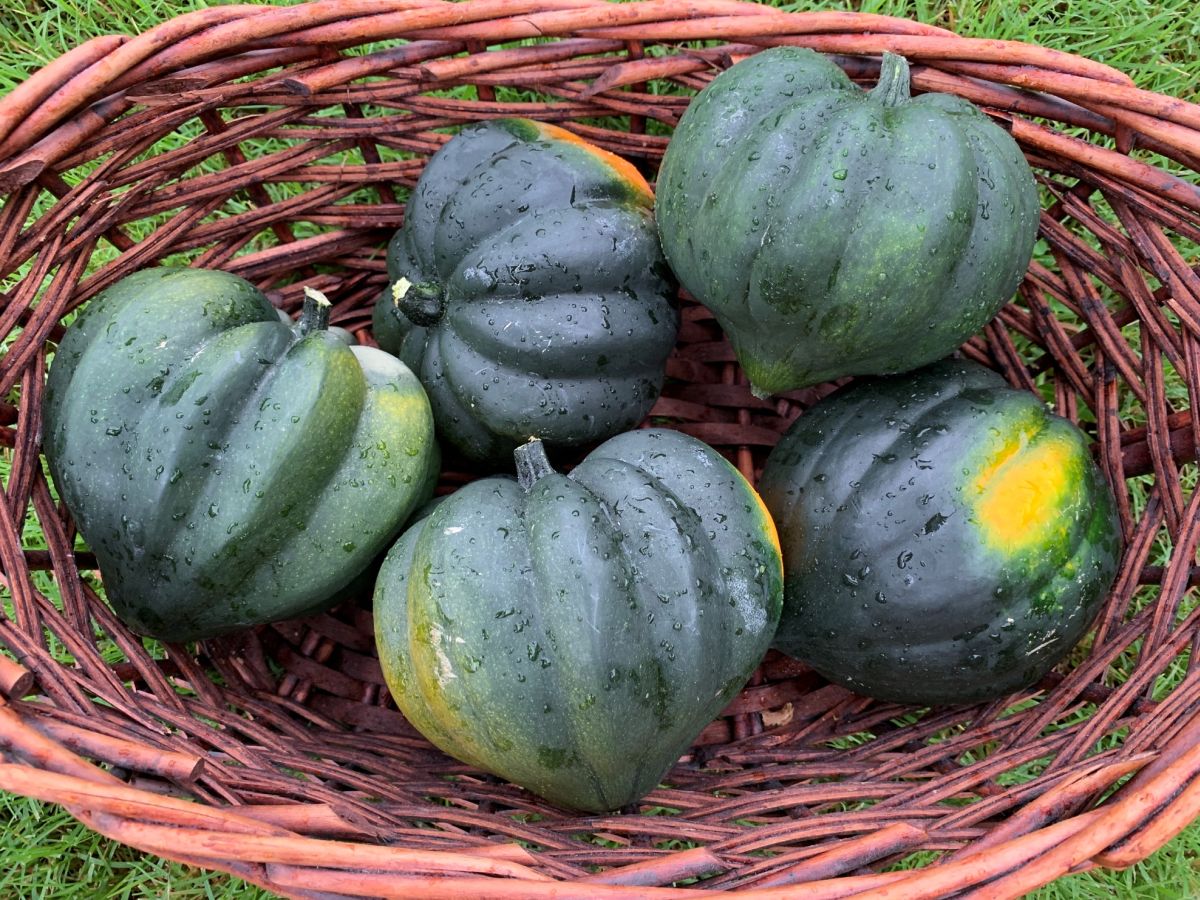
The acorn squash is the most popular eating squash in the world and with good reason. The bright orange flesh of this sweet, nutty squash is perfectly sized for individual servings and are delicious enough that even picky eaters and children often like them.
Acorn squash are also one of the easier winter squash varieties to grow at home. These squash are named for their distinctive acorn shape. (How to Grow Acorn Squash in Containers – Okra In My Garden)
8. Delicata Squash
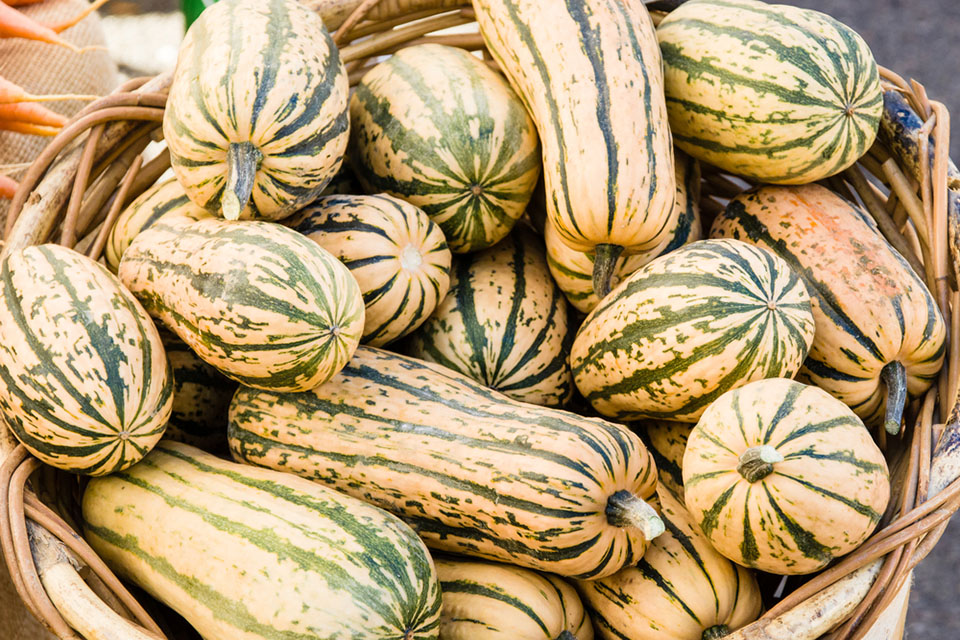
Delicata squash are named for their delicate and thin skin. Their sensitivity makes these winter squash one of the few varieties where the skin is considered edible as well as the flesh.
They are a colorful squash variety that have a light-yellow base with dark green stripes. The most common preparation for delicata squash is roasting it in the oven. (Delicata Squash: I Can’t Believe It’s Not Butternut – Modern Farmer)
9. Butternut Squash
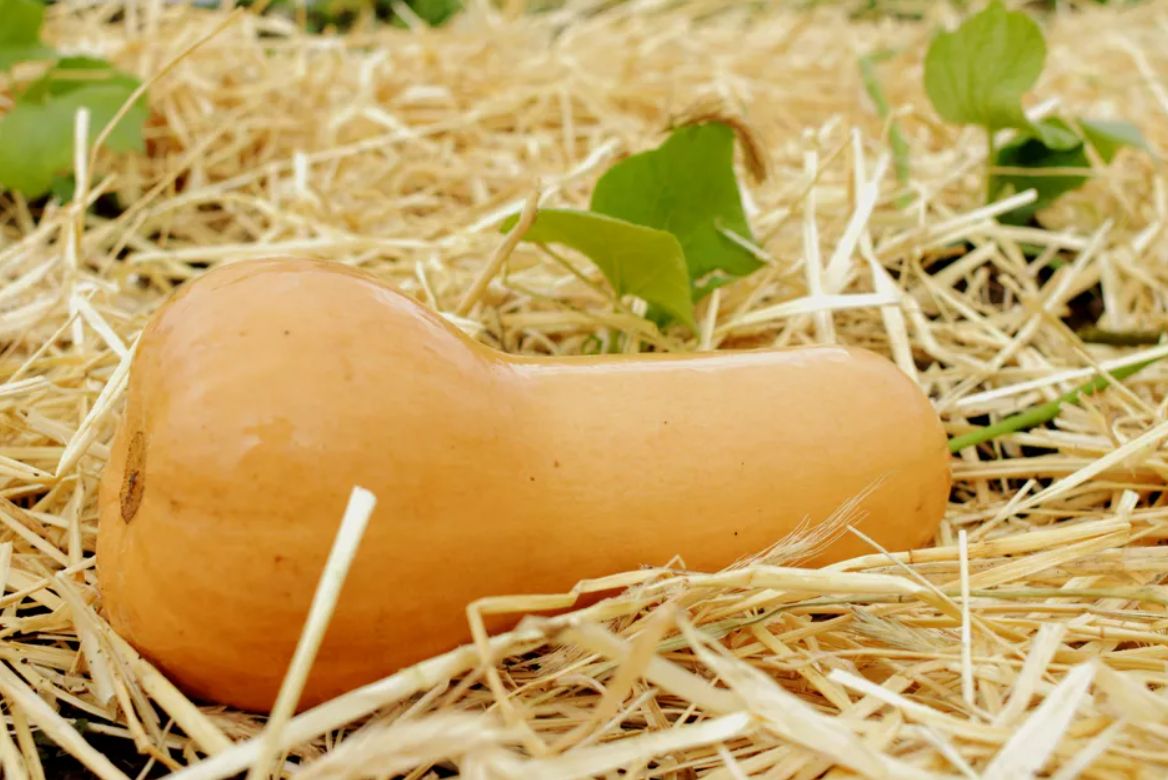
Similar to delicata squash but with a tougher outer skin, butternut squash are another squash variety that is popular in baked and roasted autumn dishes. Butternut squash has tender orange flesh and a tan outer skin.
If you want to peel butternut squash for cooking, parboiling the squash can make the skin easier to remove. (How to Grow Butternut Squash (thespruce.com))
10. Kabocha Squash
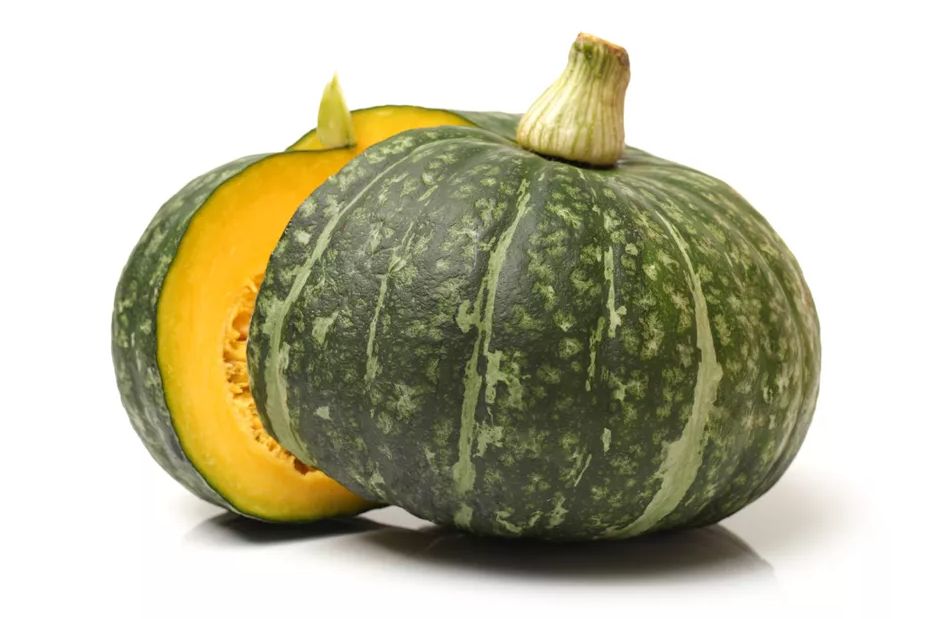
The kabocha squash, also known as Japanese pumpkin, has a mottled dark green skin with bright orange or yellow flesh. Unlike the varieties of pumpkin that are commonly found in American grocery stores, these Japanese squash are grown specifically for eating.
Kabocha squash is delicious roasted with soy sauce or stuffed and baked with other ingredients. (What Is Kabocha Squash? (thespruceeats.com))
11. Carnival Squash
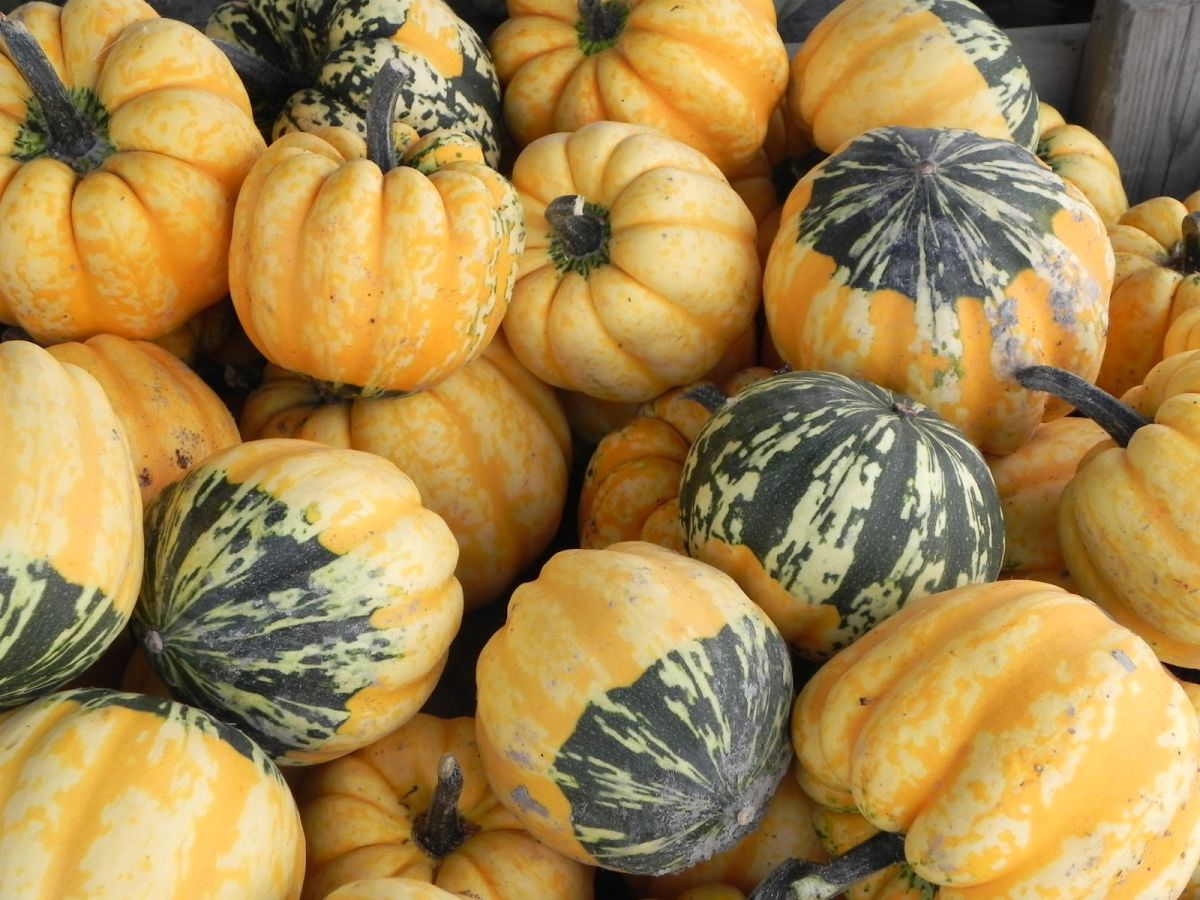
Carnival squash look like a combination of sweet dumpling squash and acorn squash. The most striking quality of this squash variety is its colorful patterned outer skin that is speckled with green, cream, and pale orange.
Even though it is pretty enough to be used for decoration in the fall, this winter squash is delicious when roasted. (Carnival Squash (palo-alto.ca.us))
12. Hubbard Squash
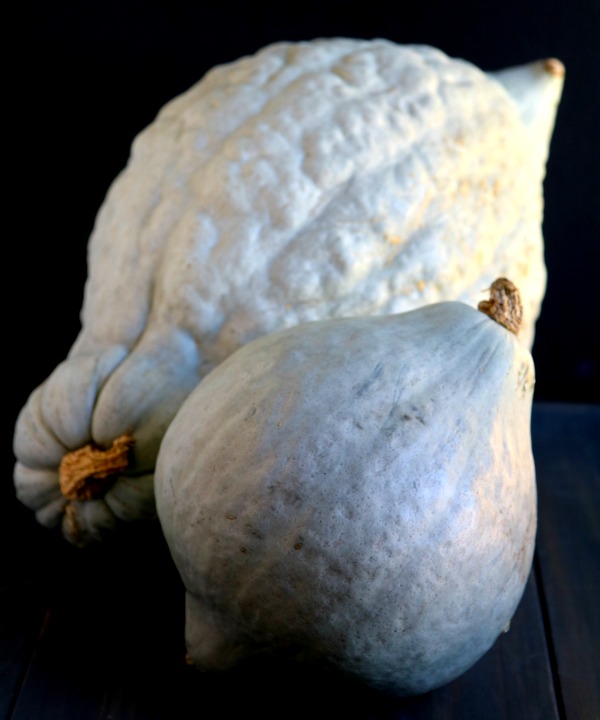
Hubbard squash may not be as popular as some other winter squash varieties, but it should be. This sweet squash has a mild flavor similar to sweet potatoes and can often be found with a pale pastel blue or reddish-orange skin.
The outer appearance of hubbard squash hides a bright yellow interior that is delicious when roasted or baked. (How to cook Hubbard squash – Pook’s Pantry Recipe Blog (pookspantry.com))
13. Banana Squash
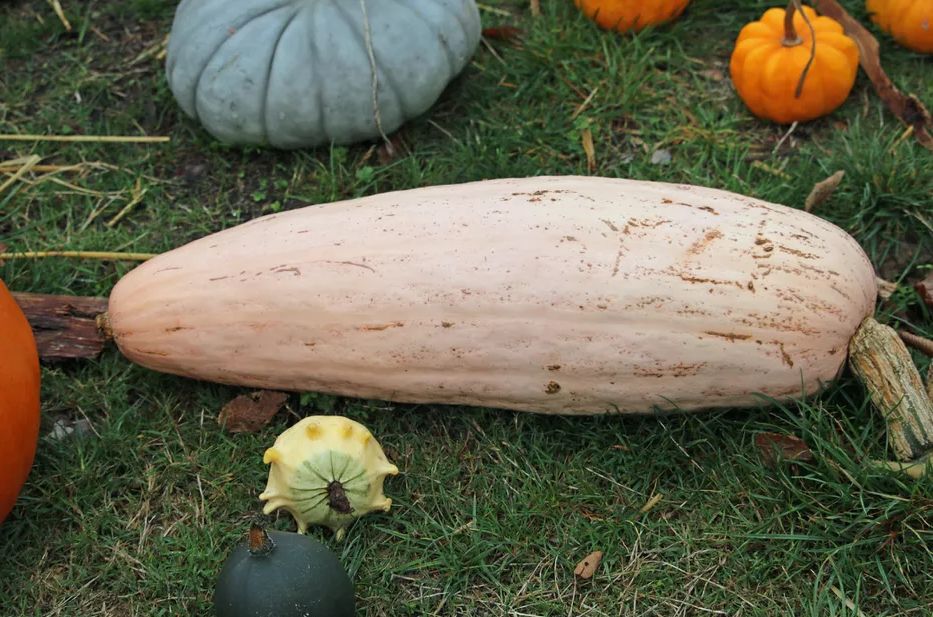
The banana squash is named for its banana-like shape rather than its flavor. The taste is actually much more similar to butternut squash and sweet potatoes. These squash are often paired with roasted meats, stone fruits like apricots, and aromatic spices.
Banana squash have a pale yellow or pink outer skin and a bright yellow flesh that can be cooked in recipes that call for any other common winter squash varieties. (What Is Banana Squash? (thespruceeats.com))
Types of Squash FAQ
Can You Eat All Types of Squash?
While many cultivars of squash have edible flesh and can be cooked in a variety of different ways, there are some varieties of squash that are classified as inedible. These squash are still grown for their decorative value and for their use in crafts. Inedible squash are often referred to as gourds rather than squash.
What Is the Most Popular Squash?
The most popular variety of squash grown and eaten in the world is the acorn squash. Prized for its long storage capabilities and its sweet, nutty flavor, this squash is most often cooked by cutting it in half and slathering it with butter and brown sugar before roasting.
What Is the Sweetest Squash?
The sweetest variety of squash is the buttercup squash. These squash are similar to butternut squash. However, their flesh is so sweet they can be used as a substitute in sweet potato recipes. Buttercup squash are sometimes even known as sweet potato squash due to their similar flavors and preparations.
Is Zucchini a Type of Squash?
Even though they look similar to several other squash varieties, many people think that zucchini is a separate kind of vegetable, or that all squash are considered zucchini. Zucchini are only a single type of squash.
Are Any Types of Squash Poisonous?
All squash contain a bitter group of chemical compounds known as cucurbitacins. In large amounts, this compound can cause abdominal pain, diarrhea, and other digestive issues in people who eat it.
However, it’s important to note that the incidence of toxic squash syndrome is extremely rare. There are only a few cases being diagnosed each year compared to the tens of thousands of pounds of squash that are safely consumed worldwide.
Is Eggplant a Type of Squash?
Even though they might be similar in shape and preparation, eggplant is from a completely different plant family than squash. Eggplants are a member of the nightshade family, a plant family that also contains potatoes and tomatoes.
In contrast, squash plants are a member of the cucurbit family. This includes other backyard vegetables such as melons, pumpkins, and cucumbers.
Squash Is a Versatile Vegetable
Squash are one of the most versatile vegetables you can grow and cook with. It doesn’t matter whether you prefer sweet dishes or savory ones, you can find different types of squash for a recipe to suit your palate. This useful vegetable is also one of the few that can be grown in warm and cold weather, making it an essential kitchen staple for all seasons.
